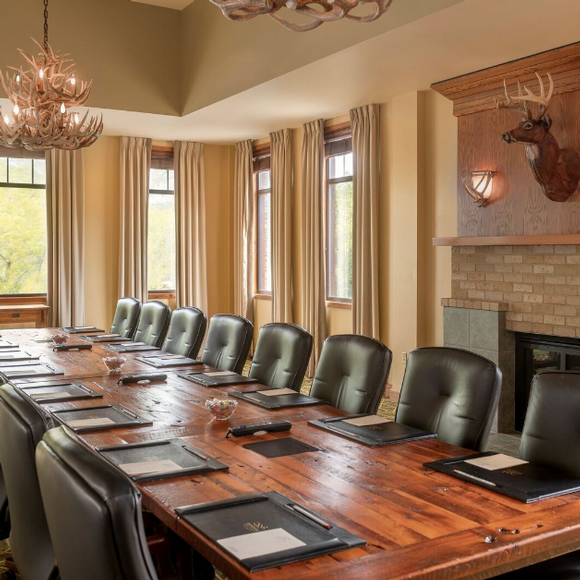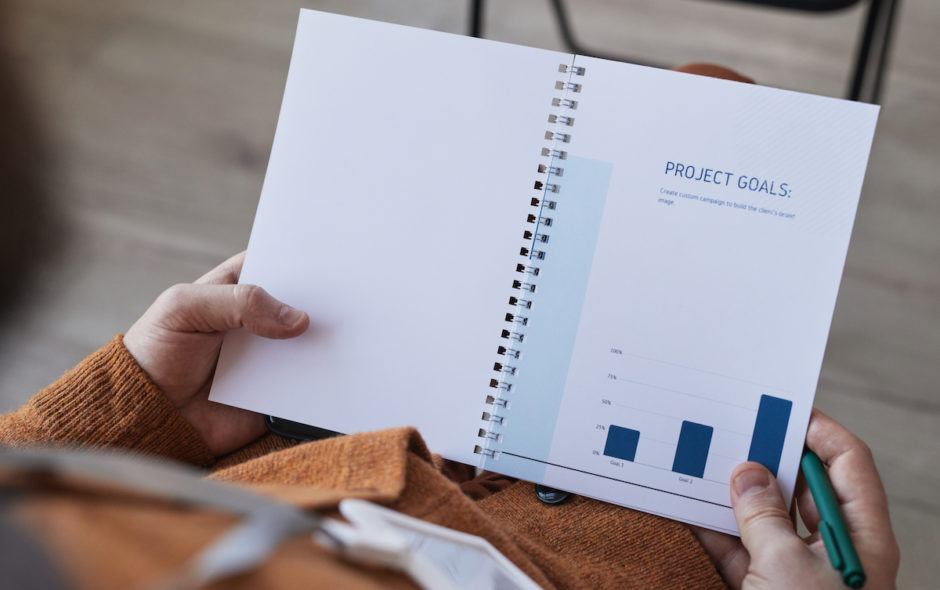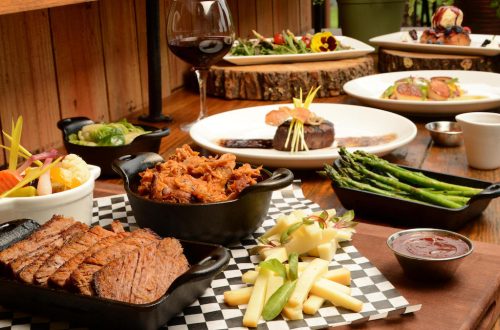Conferences provide opportunities for professional development and business networking, which are essential for innovation. A successful conference can have a large or small turnout, depending on the industry. For example, a weekend conference might have 200 attendees, while a week-long conference could have 15,000 attendees.
As a conference planning manager, you have a lot on your plate. There’s a lot to consider, from booking the venue to arranging transportation and accommodation for attendees.
That’s why, with the help of Catering & Conference Manager Jake Zadjura, we’ve put together a conference planner checklist to help make your job a little easier.
Use this as your starter guide for planning a successful and stress-free conference Plus, check out this video full of hacks and hits in an interview with Jake to help kick up your event even more!
Conference Planner Checklist – Here’s What You Need
1. Choose the Conference Theme
Choosing a conference theme is a great way to set the tone for your event and make it more memorable for attendees. It also helps to focus your planning and ensure that all your Conference activities align with your overall goals.
Here are some tips on how to choose a conference theme.
Number of Attendees
When choosing a conference theme, one of the first things you need to consider is the number of attendees. If you’re expecting a large number of attendees, you’ll want to choose a theme and venue to accommodate them. For smaller conferences, you may be able to get away with a more intimate setting.
Age Group
Another important factor to consider when choosing a conference theme is the age group of your attendees. If your conference is geared towards young professionals, you’ll want to choose a theme that reflects their interests and energy level.
On the other hand, if your audience is composed of industry veterans, you’ll want to select a more sophisticated theme that reflects their experience.
2. Set the Date and Location
The date and location of your event are two of the most important factors in its success. You’ll want to pick a date that is convenient for both you and your guests and a location that is easily accessible and has all the amenities you need.
Will your event be a reception, seminar, or something else entirely? The format of your event will determine many other details, such as the length of the event, how much time will be spent on activities vs. mingling, and whether or not refreshments will be served.
Once you’ve selected the perfect date and location, book them as soon as possible to avoid scheduling conflicts.
YOU MAY ALSO ENJOY: Planning In-Person Events? Here are 3 Ways the Venue Can Make a Huge Difference
3. Book the Venue
The conference venue is one of the most important aspects of your event. It needs to be big enough to accommodate your attendees but not so big that it’s empty and echoing. It also needs to be conveniently located and have all the necessary amenities.
When you’re looking at venues, be sure to keep your attendee profile in mind. If most of your attendees are from out of town, you’ll want to choose a venue close to major airports and highways. If they’re local, you’ll want to choose a venue easily accessible by public transportation.
You’ll also need to secure a variety of vendors for your event, depending on its size and format. Some common vendors include caterers, florists, musicians, photographers, videographers, and rental companies for items such as tables, chairs, linens, and glassware. Be sure to get quotes from several vendors before making any decisions so you can stay within your company’s budget.
Jake adds, “your event orders and paperwork should always answer who, what, when, where, and how. Be as detailed as possible.”

4. Arrange Transportation and Accommodation for Attendees
If your Conference is in a different city or country, you’ll need to arrange transportation and accommodation for attendees.
This can be done through a travel agency or directly with hotels and airlines. Make sure to give them plenty of notice so they can clear their schedules and make travel arrangements if necessary.
5. Create a Conference Website
Your conference website is where attendees will find information about the event, so it’s important to make it informative and user-friendly. Include details such as the Conference schedule, speakers, and sponsors.
Your website should be the hub for all things related to your event. Creating an event page is a great way to build excitement and attract people to attend. Include all the essential information about your event, like the date, time, location, speakers, agenda, ticket prices, etc. You should also include eye-catching photos and videos that help give visitors a taste of what they can expect at your event.
Remember to include a call-to-action (CTA) telling visitors how they can purchase tickets or sign up for more information.
6. Promote the Conference
Once you have all the details in place, it’s time to start promoting the Conference. This can be done through social media, email marketing, and traditional advertising.
Successfully marketing your event takes time, effort, and creativity. You’ll need to develop a catchy name and tagline, design eye-catching marketing materials, and get the word out through various channels.
A well-executed marketing campaign will help ensure that your event is well-attended in addition to traditional methods such as print advertisements and flyers.
Creating a conference website for your event is also a great way to drive RSVPs and collect contact information for follow-up communications after the event has ended.
7. Create a Guest List
Who do you want to invite to your event? Creating a guest list early on will help you stay organized and on budget as you plan your event.
Be sure to include contact information for each guest so you can easily reach them to send invitations or reminders closer to the event date.
8. Design the Conference Program
A conference program is more than just a list of events and activities. It’s a tool that helps you plan and execute a successful event. But how do you create a conference program that fits your needs?
The Conference program is a key component of your event. It should include an overview of the Conference activities and the speakers’ and panelists’ bios. Conference programs should also be easy to navigate. Include a table of contents, page numbers, and clear section headings so attendees can quickly find what they’re looking for.
Think about the flow of your conference program. What order will the sessions be in? How will attendees move from one session to the next? Make sure your program reflects the flow of your event.
Include important details like speaker bios, contact information, and session descriptions. This will help attendees plan their conference experience and make the most of their time.
Finally, remember to include your conference logo and branding elements! Your program is an extension of your brand, so make sure it reflects the style and tone of your event.

9. Order Conference Materials
You’ll need to order Conference materials such as name badges, lanyards, programs, and handouts. These can be ordered from a print shop or an online vendor. Many companies offer conference material packages that can save you time and money.
When hosting a business conference, it’s important to plan an agenda to keep attendees engaged. Work with keynote speakers and break-out session leaders to create a well-rounded schedule.
Lastly, consider the activities you want to include at your event. An agenda will help you map out the flow of the event and ensure that everything runs smoothly on the day of. Again, be sure to leave some time for mingling so your guests can network with one another.
YOU MAY ALSO ENJOY: Business with Leisure: How Organizations Can Get the Most from a Strategic Planning Event
10. Plan Your Audio-Visual
As a conference planning manager, you have a lot of balls to keep in the air – venue, food and drink, guest speakers, sponsors, swag… the list goes on. It’s enough to make your head spin! To help you stay organized and on track, here are a few essentials you’ll need:
– Microphones: If you’re planning a keynote address or panel discussion, you’ll need at least two microphones – one for each speaker. Depending on the size of your event space and the number of speakers, you may need additional microphones to ensure that everyone in the room can hear clearly.
– PA system: A PA (public address) system is essential for amplifying sound at larger events. If you’re expecting more than 200 people at your event, we recommend renting a PA system rather than relying on the sound system in your venue.
– AV cart: An AV (audio/visual) cart is essential for transporting and setting up your audio-visual equipment. Be sure to choose one durable and easy to maneuver; you don’t want to struggle with an uncooperative cart while trying to set up for your event!
Jake ends with this tip when planning a successful conference, “you can never be detail oriented enough … and you should never, ever assume anything. Even if it’s incredibly obvious and seems like it’s something you shouldn’t have to say, you still need to be as clear and concise as possible to have an event executed to your expectations.”
Of course, no two conferences are alike, so be sure to tailor this list to fit the specific needs of your event. And don’t forget to enjoy yourself along the way. After all, planning conferences should be fun!
Ready to plan your next conference? We’d love to help! Reach out to us here.




